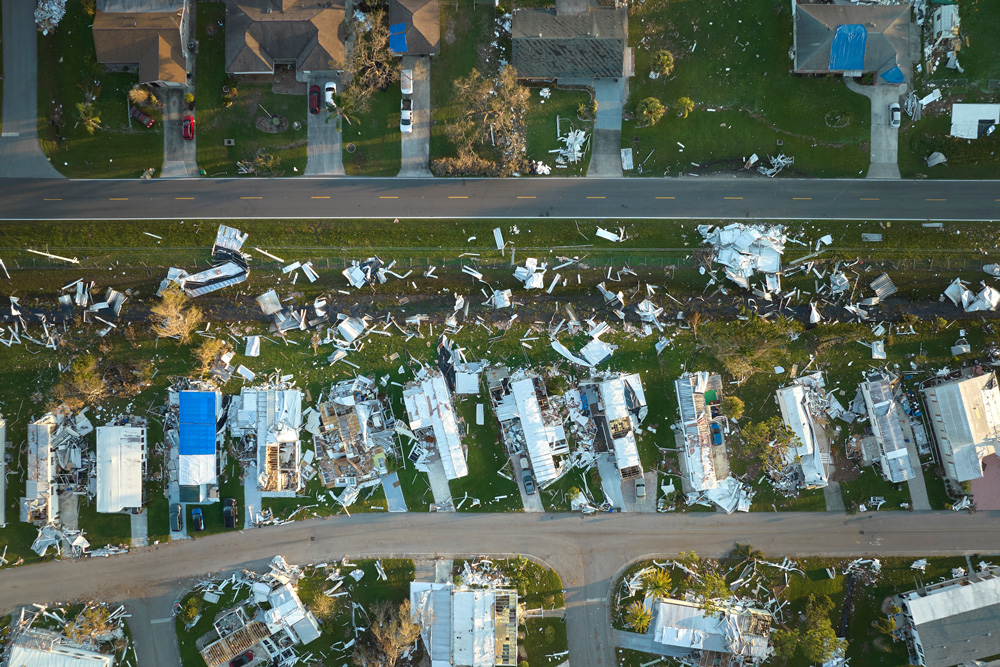Staples Consulting Group can bring calm after the storm. As storm damage specialists for over a decade, Staples Consulting Group devises the plan and assembles the team of professionals that will restore your property and deliver peace of mind. We work with a team of skilled contractors, engineers, public insurance adjusters, attorneys and more that will evaluate the loss, recommend the next steps and put the plan in motion based on those evaluations and recommendations. From flooding caused by a tropical storm to wind damage caused by a twister, Staples Consulting Group can restore your property to how it was before.
We have a deep level of understanding and familiarity with storms in all their forms including hurricanes, tornadoes, flooding, hail and lightning. We also specialize in dealing with the damage of “storms” that life can bring, not just the weather, such as:
- Explosions
- Fires
- Smoke
- Theft
- Vandalism
- Vehicle VS structure
- Earthquakes
- And more…
The nature of storms — along with their size and strength — help us devise the proper plan for storm restoration services.
Hurricanes
Hurricanes are tropical cyclones that are known for bringing strong wind gusts and heavy rainfall. Typically forming along warm ocean waters, where they gather their strength, hurricanes take shape during certain times of the year. The Atlantic hurricane season, for example, runs between June 1 and November 30. This window of time is when hurricanes usually transpire and primarily affect coastal states. They weaken gradually as they cross over land.
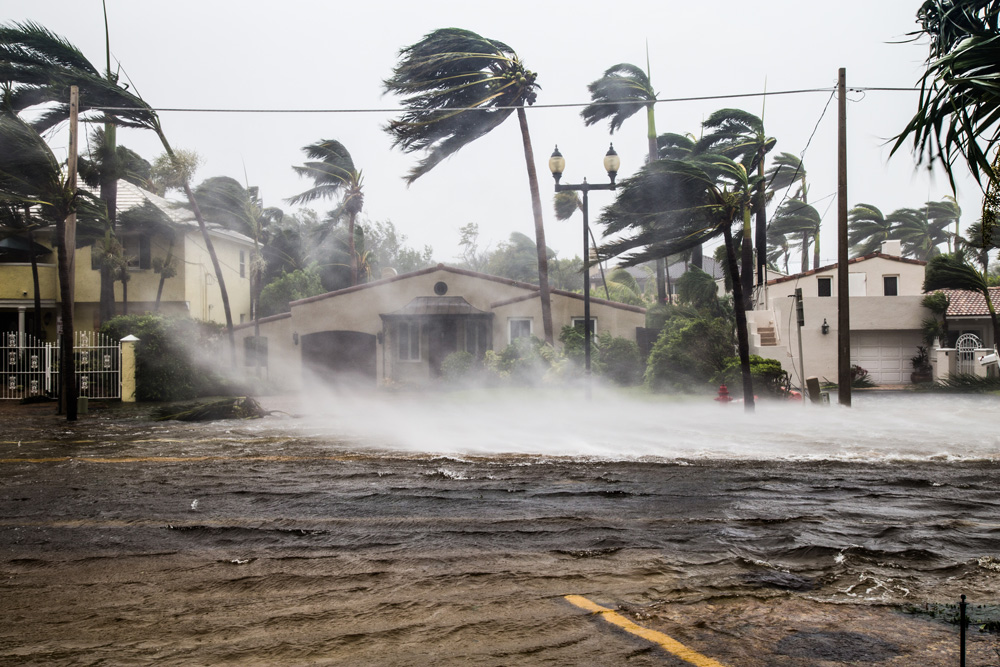
How damaging are hurricanes?
The Saffir-Simpson Hurricane Wind Scale helps climatologists, meteorologists and storm damage specialists classify the intensity of forecasted hurricanes to determine the potential damage they may cause based on their expected wind speed. Spanning from Category 1 to Category 5, the higher the number, the more severe and widespread the damage hurricanes can create:
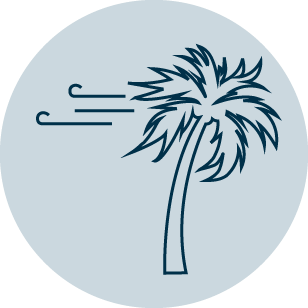
Category 1
(Sustained winds between 74 and 95 mph)
Very dangerous winds can cause roof shingles, vinyl siding, and gutters to be damaged by Category 1 hurricanes. Extensive damage to power lines is also probable, requiring storm restoration services.

Category 2
(Sustained winds between 96 and 110 mph)
Major roof and siding damage on well-constructed homes and businesses is possible with Category 2 hurricanes, fueled by extremely dangerous winds. Power outages have the potential to last days, if not weeks.

Category 3
(Sustained winds between 111 and 129 mph)
Roof decking and gable ends on standing structures can fail as a result of the ferocity of Category 3 hurricanes (Categories 3 through 5 are considered “major” by the National Hurricane Center). Trees may be uprooted, posing a safety threat to property owners.
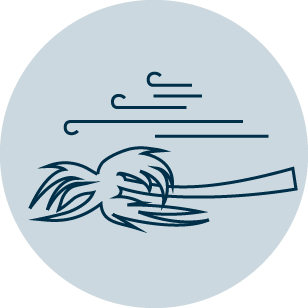
Category 4
(Sustained winds between 130 and 156 mph)
Able to unleash catastrophic levels of damage, Category 4 storms are rare but can destroy homes in their entirety, requiring extensive rebuilding and restoration services. The extremely powerful winds can also render the affected area uninhabitable for weeks or months due to fallen trees and utility poles.

Category 5
(Sustained winds of 157 mph or higher)
Roof failure and wall collapse will undoubtedly occur, perhaps for a majority of businesses and homes as a result of Category 5 hurricanes. Electricity outages can take months to get everyone back online, and the effects are widespread and crippling for most communities. Only four Category 5 hurricanes have hit the U.S. mainland in recorded history, the most recent being Hurricane Michael in 2018.
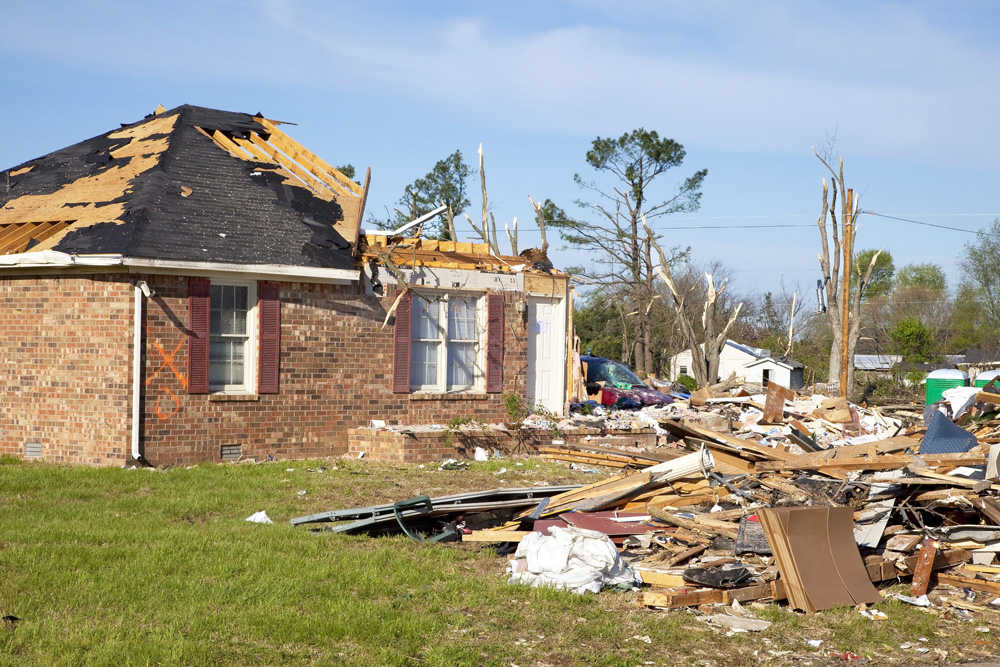
Tornadoes
Primarily affecting North America, tornadoes are powerful columns of air that form out of cumulonimbus clouds, which are known for producing storm activity (e.g. thunder and lightning). Upon touch down with the earth, these funnel-shaped clouds move in a circular motion, producing wind speeds that can reach or exceed 300 miles per hour. Approximately 1,200 tornadoes are reported in the U.S. each year, which is four times the amount that the entire world sees in the same period.
How damaging are tornadoes?
Tornadoes are similar to hurricanes, in that they are capable of producing significant damage to property (e.g. roofing, siding, automobiles, etc.) and infrastructure in the surrounding area depending on their size and wind speeds. The intensity of tornadoes are weighted through the Enhanced Fujita Scale (EF Scale). The National Weather Service uses the EF Scale to classify the strength of tornadoes based on their wind speed, from EF1 (weakest) to EF5 (strongest).

EF1: 86 to 110 mph

EF2: 111 to 135 mph

EF3: 136 to 165 mph3

EF4: 166 to 200 mph

EF5: 200 mph and higher
A tornado is also classified after the fact, based on how much damage it causes to a structure, depending on what a given tornado hits (e.g. a wooden home, a brick building, trees, etc.) and what happens to that structure once it’s struck (e.g. walls collapsed, roof failure, brick home destroyed, etc.). The ratings are based on a set of 28 damage indicators. An EF3 may be scaled down or up accordingly.
The damage that a tornado causes can be wide-ranging. In addition to wind speed and what a twister strikes, other factors at work include how long a tornado is on the ground (be it seconds or several minutes), its number of vortexes (i.e. subvortices), the sturdiness of structures and other unknown variables.
Other weather and life storms we specialize in
Flooding. Earthquakes. Lightning. Fire. Hail damage. Frigid weather. Major hurricanes. EF3 tornadoes. Extreme events and scenarios such as these bring frustration and devastation that require restoration.
While the details of a storm or damaging incident may seem like minutiae to you as a property owner, they mean a great deal to your insurer for them to cover the cost of the repairs based on the coverage you have and the damage you receive. The storm damage specialists at Staples Consulting Group are experts in the particulars of property loss claims. From arranging mediation support to litigation support to detailed claims analysis, Staples Consulting Group can handle every aspect of your commercial or residential storm damage restoration servicing needs. We’re based in Texas and cover all five states representing the Gulf Coast (Texas, Florida, Mississippi, Alabama, and Louisiana). Please contact us today.
